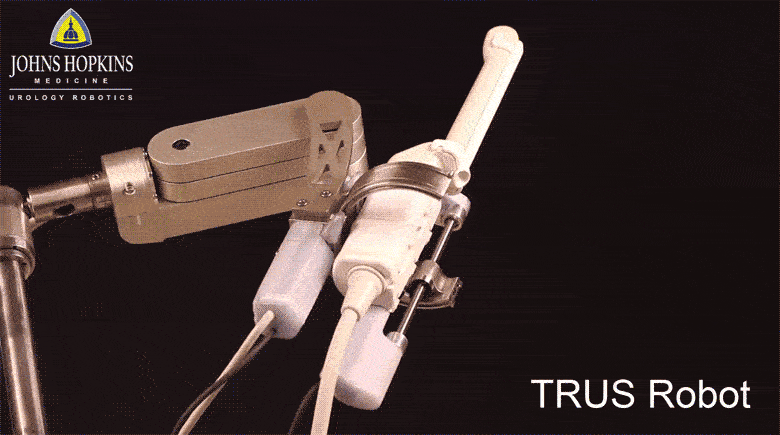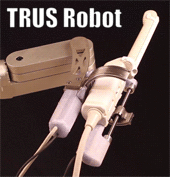
We present a robot-assisted approach for transrectal ultrasound (TRUS) guided prostate biopsy. The robot is a hands-free probe manipulator that moves the ultrasound probe with the same 4 degrees-of-freedom (DoF) that are used manually in transrectal procedures, closely replicating its movement by hand. The software was developed for 3D imaging, biopsy planning, robot control, and navigation. Methods to minimize the deformation of the prostate caused by the transrectal probe at 3D imaging and needle targeting were developed to reduce biopsy targeting errors. We also present a prostate coordinate system (PCS). The PCS helps to define a systematic biopsy plan without the need for prostate segmentation. Comprehensive tests were performed, including two bench tests, one imaging test, two in vitro targeting tests, and an IRB-approved clinical trial on five patients. Preclinical tests showed that image-based needle targeting can be accomplished with accuracy on the order of 1mm. Currently, targeting accuracy is substantially lower than the 5mm required to target clinically significant PCa. Prostate biopsy can be accomplished with minimal TRUS pressure on the gland and submillimetric prostate deformations. All five clinical cases were successful with an average procedure time of 13min and millimeter targeting accuracy. Hands-free TRUS operation, transrectal TRUS-guided prostate biopsy with minimal prostate deformations, and the PCS based biopsy plan are novel methods. Robot-assisted prostate biopsy is safe and feasible. Hands-free, skill independent, accurate needle targeting has the potential to increase the detection of clinically significant prostate cancer. Trials of clinical significance are needed to determine if more accurate biopsy targeting correlates with higher detection of clinically significant PCa.

